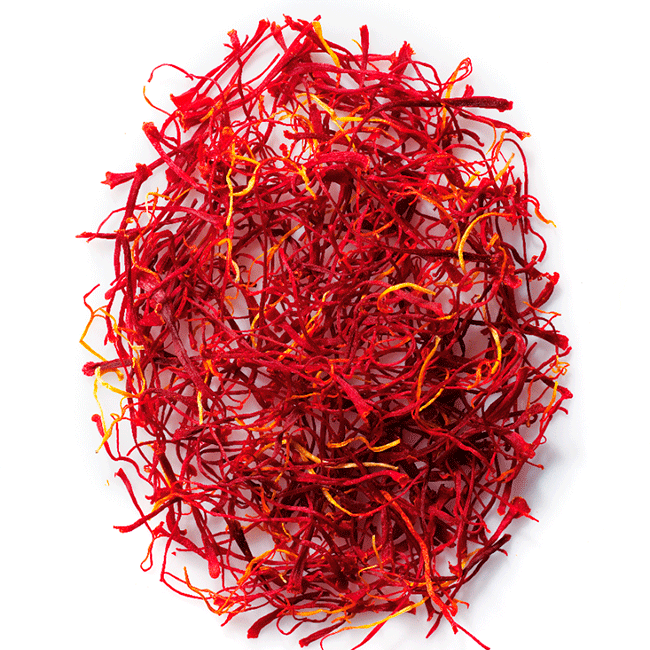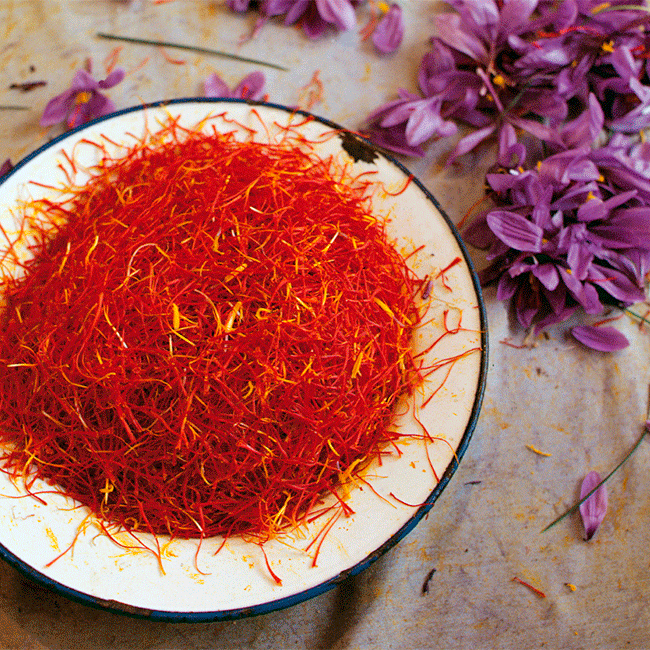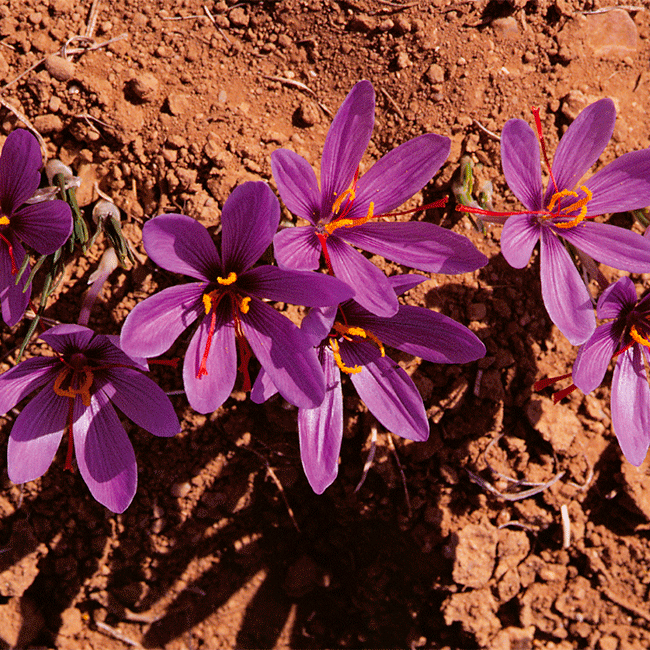.png.transform/rendition-xs/image_image%20(1).png)
Spanish Saffron: The Spice Of Life
Spain, and La Mancha in particular, is fertile ground for saffron, the ancient seasoning that is now among the country’s leading natural commodities and most sought-after exports.

Vivid purple flowers bloom across the harsh farm country of La Mancha, emerging so late in the year that they’re known as autumn crocuses, or crocus sativus. Harvest season begins just as the weather turns cold on that high plateau, and it’s a labour-intensive process. The stigmas of the plant are hand-picked, dried, and pruned to extract an ancient commodity – the only saffron in Spain awarded DOP status (protected demonination of origin) to ensure quality control.
Saffron has always been something of a luxury, admits Carlos Fernández, president of the regional supervising body, Denominación de Origen Protegida Azafrán de La Mancha. “It is true that historically it has been used for ceremonies of different kinds by kings, pharaohs, and nobles, and this may have endowed it with a certain exclusivity,” says Fernández.
In today’s market, the finished product has a relatively high price point beside the other spices on the shelf. The artisanal process that takes it from planting to packaging does tend to make it more expensive, admits Fernández, but also represents added value. And it’s worth remembering that when it comes to cooking, a little saffron goes a very long way.
“With very small amounts, great results are obtained,” he says. At current Spanish prices, the proper application of crushed saffron into any given sauce, stew, or rice dish, for example, should cost between 6 and 12 cents per ration. Not so much, to the individual user. Such figures tend to help Fernández and his colleagues in their ongoing work to “demystify” this seasoning.

But a certain mystery remains, in the long story of how saffron made its way across the world over thousands of years, from the fields of central Asia to the pyramids of Egypt and the sparse plains of central Spain. Academics concur on the basics – that the Moors were first to plant it on the Iberian Peninsula during their long Medieval dominion. Besides adding colour and flavour to some of the truly defining recipes in Spanish food culture, from paella to salmorejo soup, the spice known as “red gold” also came to infust the folk songs, stories, and customs of farming communities. Big gaps remain in the record, however, and Fernández’s organisation has recently commissioned a full enthnographic study “to help us understand how saffron was introduced in our region [and assess its] socio-cultural and economic impact throughout history.”
The resulting report is expected at the end of 2020. In the meantime, Spain has long since become the world’s second-biggest exporter of saffron (after Iran), while La Mancha has provided the perfect growing conditions, in terms of terrain, elevation, climate, light, humidity etc. Even casual consumers can see that Manchegan saffron is different from other types, the stigmas being visibly redder to a degree that is actually measured by the DOP inspectors and external auditors who ensure that all producers and vendors meet the agreed standards.

The remit of these experts covers various deeply technical organoleptic characteristics: a minimum “power colouring” of 200 units, and an active ingredient content that often exceeds 300 crocinas, or “absorbance units”. The core filaments must remain threaded together even after drying, and can only be sold in their original intact strands, never cut or ground, and never in bulk quantities. Manchegan DO-certified saffron from Toledo, Albacete, Cuenca, and Ciudad Real is packed in containers of 100 milligrams or less. And demand has been steadily growing across Europe, the UK, and the US for decades, effectively doubling between 2013 and 2019. Foreign markets accounted for almost half of the nearly 700,000 kilogrammes sold last year.
As Carlos Fernández puts it, saffron’s “gastronomic uses” have been so well-known for so long across Asia and the Mediterranean that they have gradually spread to “all the kitchens of the world.” Held between thumb and forefinger, dropped into a bubbling pot, the final flourish that transforms a meal like a magic spell before serving – its floral scent, fiery colour, and exotic taste are instantly recognisable, remaining effectively unchanged across the centuries.
This is the same substance that was also used to dye the clothes of marrying couples in ancient Rome and Greece, and is still gifted to newlyweds in La Mancha, as an enduring symbol of our hopes and wishes for prosperity and fertility. The latest thinking is that saffron doesn’t merely promise wellbeing, or produce it by culinary means alone, but by working deeper, biochemical effects as an antioxidant and anticarcenogenic.
Text: Stephen Phelan

